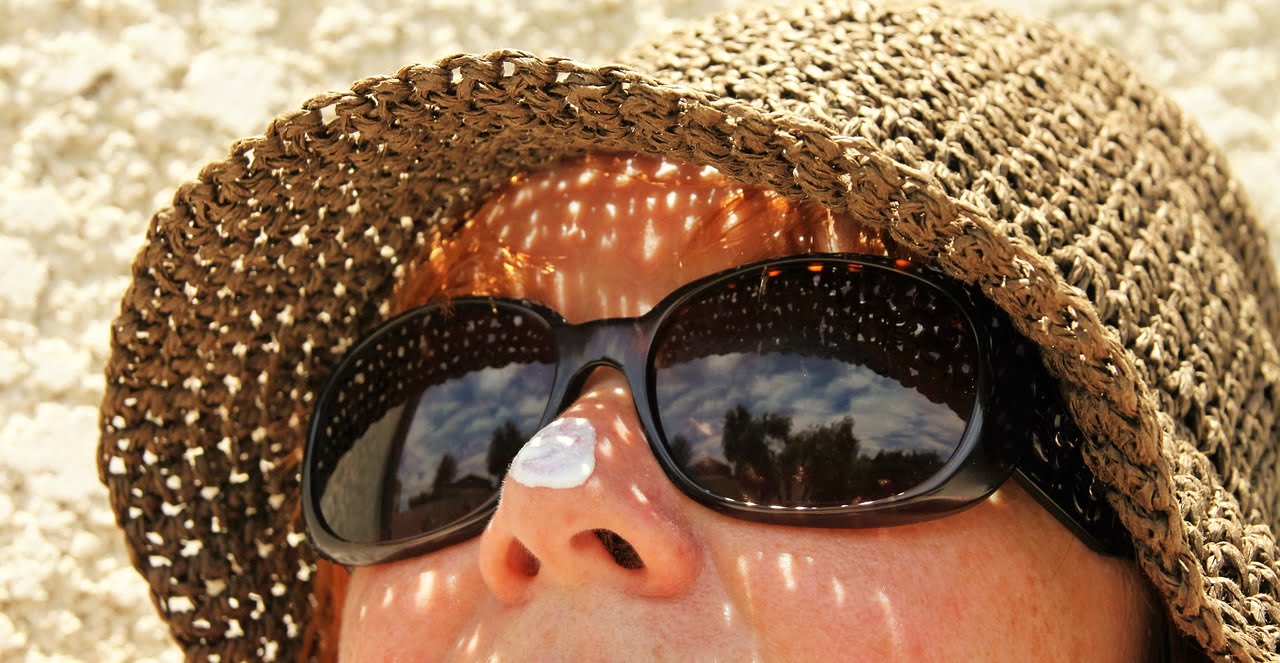
What to look for in a good sunscreen
Sunburns hurt – and hurt you long-term. So sunscreens are an imperative…and knowing what to look for in a good sunscreen is important.
The good news: The FDA is finally proposing big changes that address many of our concerns, and should make all sunscreens safer and more effective.
The bad news: The changes won’t impact sunscreens you’ll be buying THIS year.
Each sunburn causes irreversible damage to your skin that accumulates over time. It adds wrinkles and brown spots, making your skin age before its time. And each burn increases the risk of skin cancers and melanoma. I recommend following the sunscreen guidelines published by the Environmental Working Group (EWG), an American activist group specializing in research and advocacy in the areas of agricultural subsidies, toxic chemicals, and drinking water pollutants.
So while many of the FDA changes aren’t being applied to products on the shelf right now, you can still use the EWG (and my) guidelines when purchasing your sunscreen products this summer. Here’s what you need to know.
Qualities of a good sunscreen
Choose the right active Ingredients
For a long time, the FDA offered no assurances that the ingredients meant to provide protection from the sun were tested for safety and efficacy. However, it has for the first time conducted and published the results of testing for the active ingredients in sunscreen to determine two things: 1) rate of absorption through the skin and 2) health impacts that may result from exposure to those ingredients.
Based on this testing, only two active ingredients have been deemed safe – titanium dioxideand zinc oxide. The FDA recommends that the other 12 commonly used active ingredients require further testing.
Select an appropriate SPF rating
You’ll notice sunscreen on the market with a listed sun protection factor (SPF) of over 100 these days. However, bigger is not better. The FDA found that higher SPFs do not show additional benefit – and may provide a false sense of security. To counter this, the agency proposes limiting products’ SPF claims to 60+. Previously, the FDA had suggested a cap of 50+. This is what the Environmental Working Group (EWG) recommends. I do as well, and also recommend going no lower than SPF 30.
Include broad-spectrum protection
You should look for sunscreens that offer what’s termed “broad-spectrum” SPF protection. This means that the sunscreen protects against both UVA and UVB rays. It’s a way of indicating the magnitude of overall protection offered by a sunscreen. All sunscreens provide UVB ray protection but not all are “broad-spectrum” or provide UVA protection. You need both.
The FDA is proposing new test that changes the method used to evaluate sunscreens’ broad-spectrum UVA protection. The EWG has found that 25% of SPF products would not pass with the new testing without changes to formulation.
Understand water resistant/water proof/sweat resistant
Labels can get confusing! But just know that no sunscreen is actually water proof or sweat resistant. Sunscreen labeling is not allowed to use either term. However, water resistant is allowable provided that the manufacturer specifies how long it lasts while swimming or sweating. So choose water resistant but make sure you reapply every two hours at a minimum (more often if you are toweling off, which removes sunscreen).
Pick the right application
Spray applications are on the rise – but in general, I do not recommend them. First, there is the concern that users miss many parts of their bodies with sprays, resulting in inadequate coverage. Second, there is concern that inhaling sprays could cause health issues, particularly if some chemicals make it deep into the lungs.
As well, the FDA is making several proposals around sprays to better protect consumers, including banning sunscreen/bug repellent combination products. My advice is to stick with lotions to ensure better coverage and zero inhalation risk.
Chemicals to avoid in a sunscreen
Sadly, sunscreens have always had carcinogens that people were unaware of. Many have been removed over the years, but a couple are still out there in products on the shelves this year. You should avoid products containing either oxybenzone or retinyl palmitate.
Oxybenzone is a potentially hormone-disrupting chemical that is readily absorbed through the skin in large amounts. It has been detected in bodily fluids including breast milk, amniotic fluid, urine and blood. Some people have had an allergic reaction to this chemical. It is found in two-thirds of sunscreens on the market today. Children are at an event greater risk to harm from oxybenzone because of higher absorption and accumulation of it within the body.
Retinyl palmitate is form of vitamin A that may harm sun-exposed skin. It has the potential to speed up the development of skin cancer. Enough said!
Protection and prevention
Besides selecting the right sunscreen, you can do a great deal to protect your skin simply by covering your skin and getting in the shade. If you must be outside, wear clothing and a wide-brimmed hat to cover as much of your skin as you can. Don’t forget about your eyes too! You’ll want sunglasses that block at least 99 percent of UV light.
The shade is your friend – particularly between 10 am and 4 pm when UV rays are the strongest. Taking a break if you are outside for extended time and giving your skin a “rest” from sun exposure is always a good idea. This will also help you avoid heat stroke, which is common this time of year.
Finally, steer clear of tanning beds and sun lamps. They are just so bad for us. Both can cause serious long-term damage to your skin and contribute to skin cancer.
Long-term how you know your skin is ok?
In adulthood, we should all make sure to schedule an appointment annually with our Dermatologist to do mole and skin checks. By checking your skin each year, a physician can determine if there are any major changes in your skin that could be precancerous. And your physician can counsel you on sun exposure and whether or not you are getting too much.
Please be safe this summer…and take care of your skin!


Write a Comment